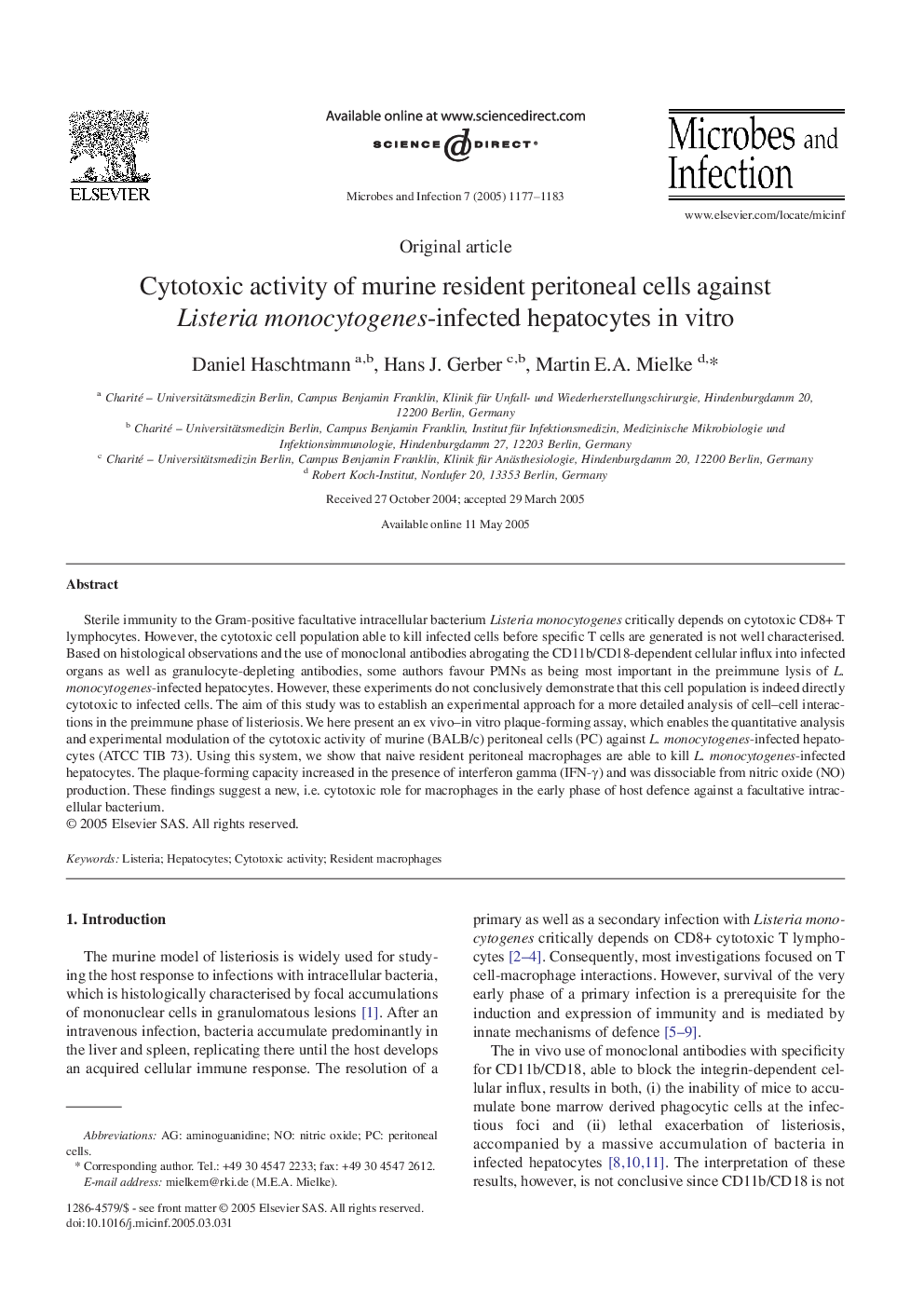| Article ID | Journal | Published Year | Pages | File Type |
|---|---|---|---|---|
| 9282870 | Microbes and Infection | 2005 | 7 Pages |
Abstract
Sterile immunity to the Gram-positive facultative intracellular bacterium Listeria monocytogenes critically depends on cytotoxic CD8+ T lymphocytes. However, the cytotoxic cell population able to kill infected cells before specific T cells are generated is not well characterised. Based on histological observations and the use of monoclonal antibodies abrogating the CD11b/CD18-dependent cellular influx into infected organs as well as granulocyte-depleting antibodies, some authors favour PMNs as being most important in the preimmune lysis of L. monocytogenes-infected hepatocytes. However, these experiments do not conclusively demonstrate that this cell population is indeed directly cytotoxic to infected cells. The aim of this study was to establish an experimental approach for a more detailed analysis of cell-cell interactions in the preimmune phase of listeriosis. We here present an ex vivo-in vitro plaque-forming assay, which enables the quantitative analysis and experimental modulation of the cytotoxic activity of murine (BALB/c) peritoneal cells (PC) against L. monocytogenes-infected hepatocytes (ATCC TIB 73). Using this system, we show that naive resident peritoneal macrophages are able to kill L. monocytogenes-infected hepatocytes. The plaque-forming capacity increased in the presence of interferon gamma (IFN-γ) and was dissociable from nitric oxide (NO) production. These findings suggest a new, i.e. cytotoxic role for macrophages in the early phase of host defence against a facultative intracellular bacterium.
Related Topics
Life Sciences
Immunology and Microbiology
Immunology
Authors
Daniel Haschtmann, Hans J. Gerber, Martin E.A. Mielke,
